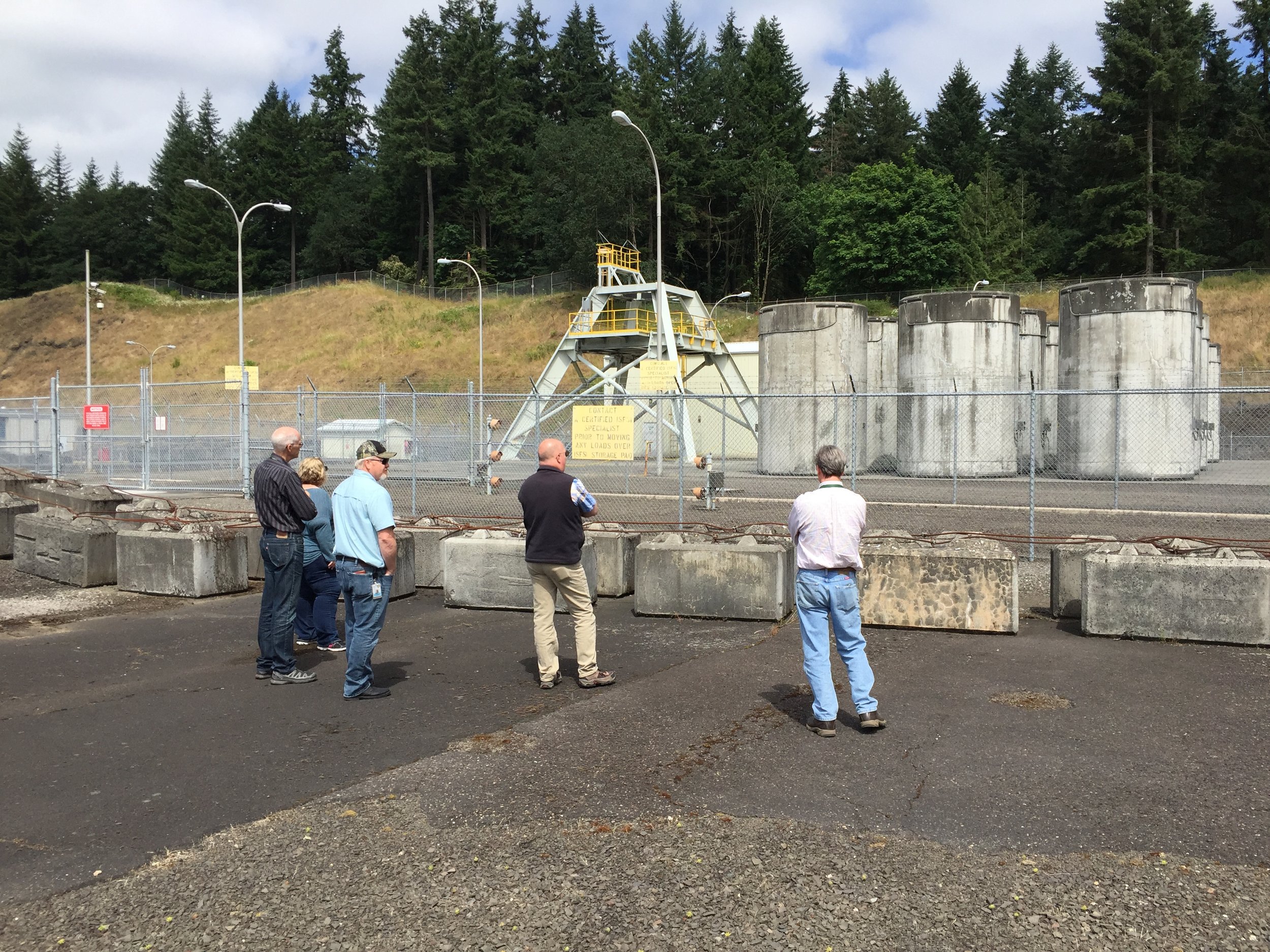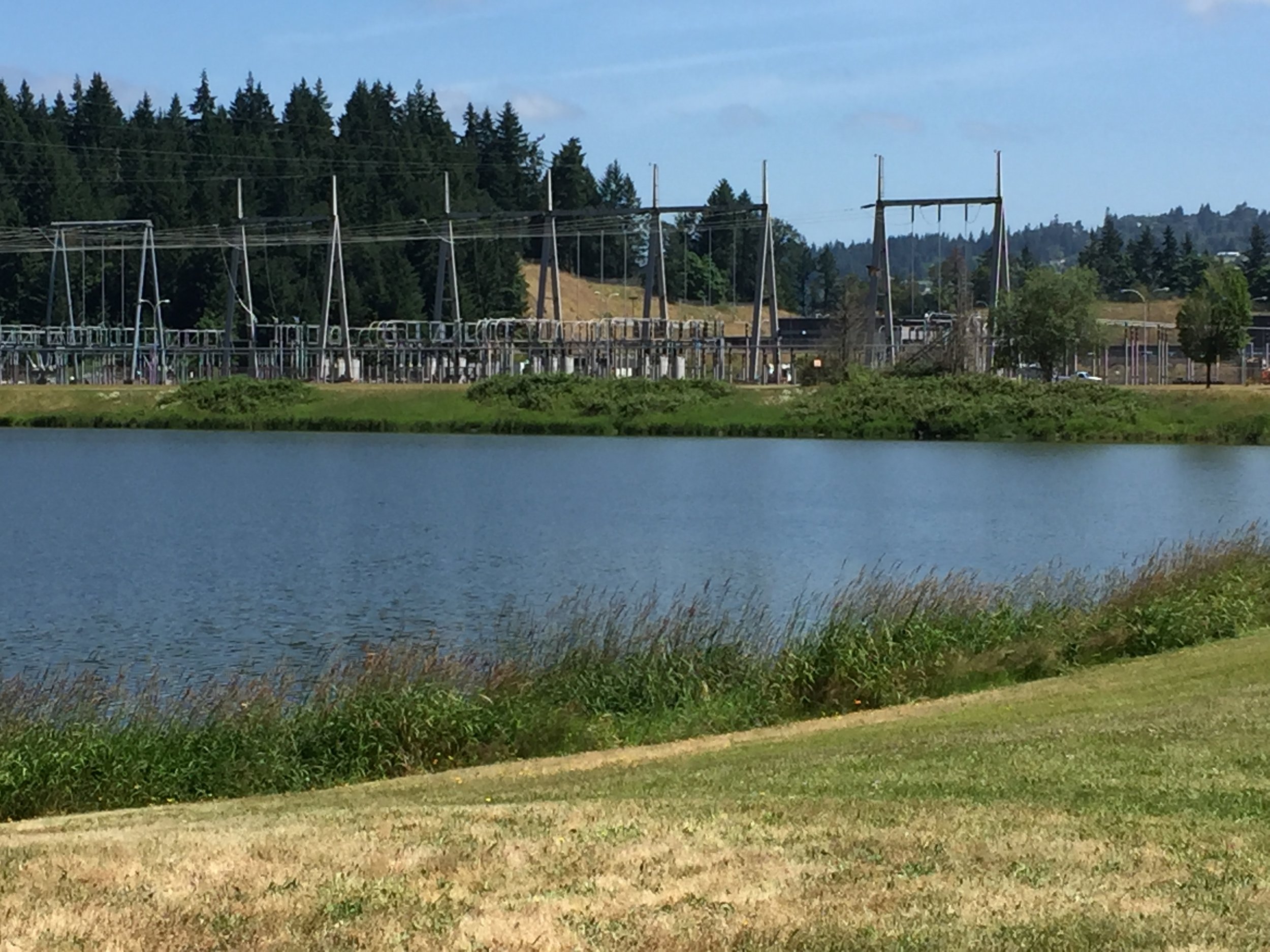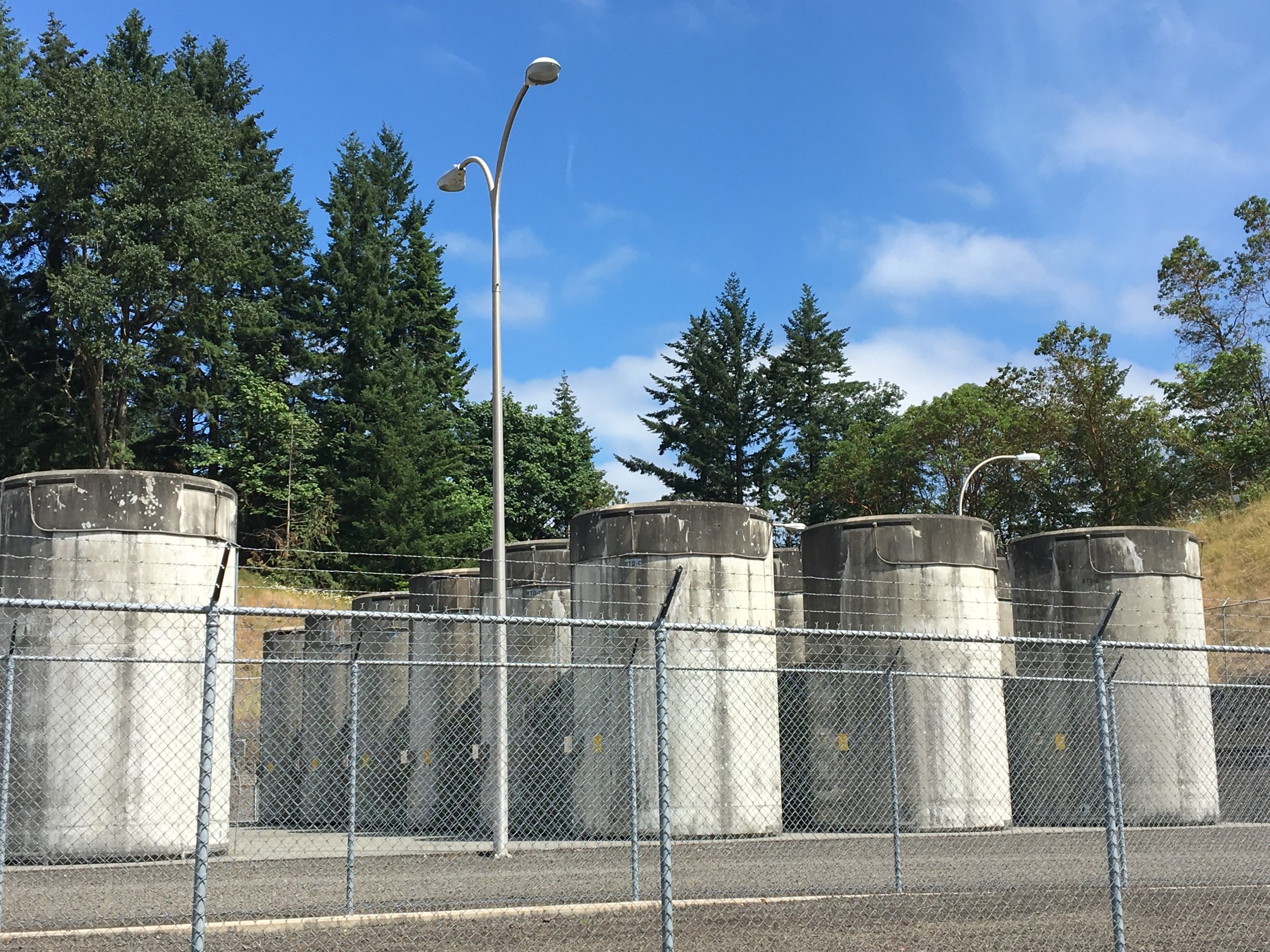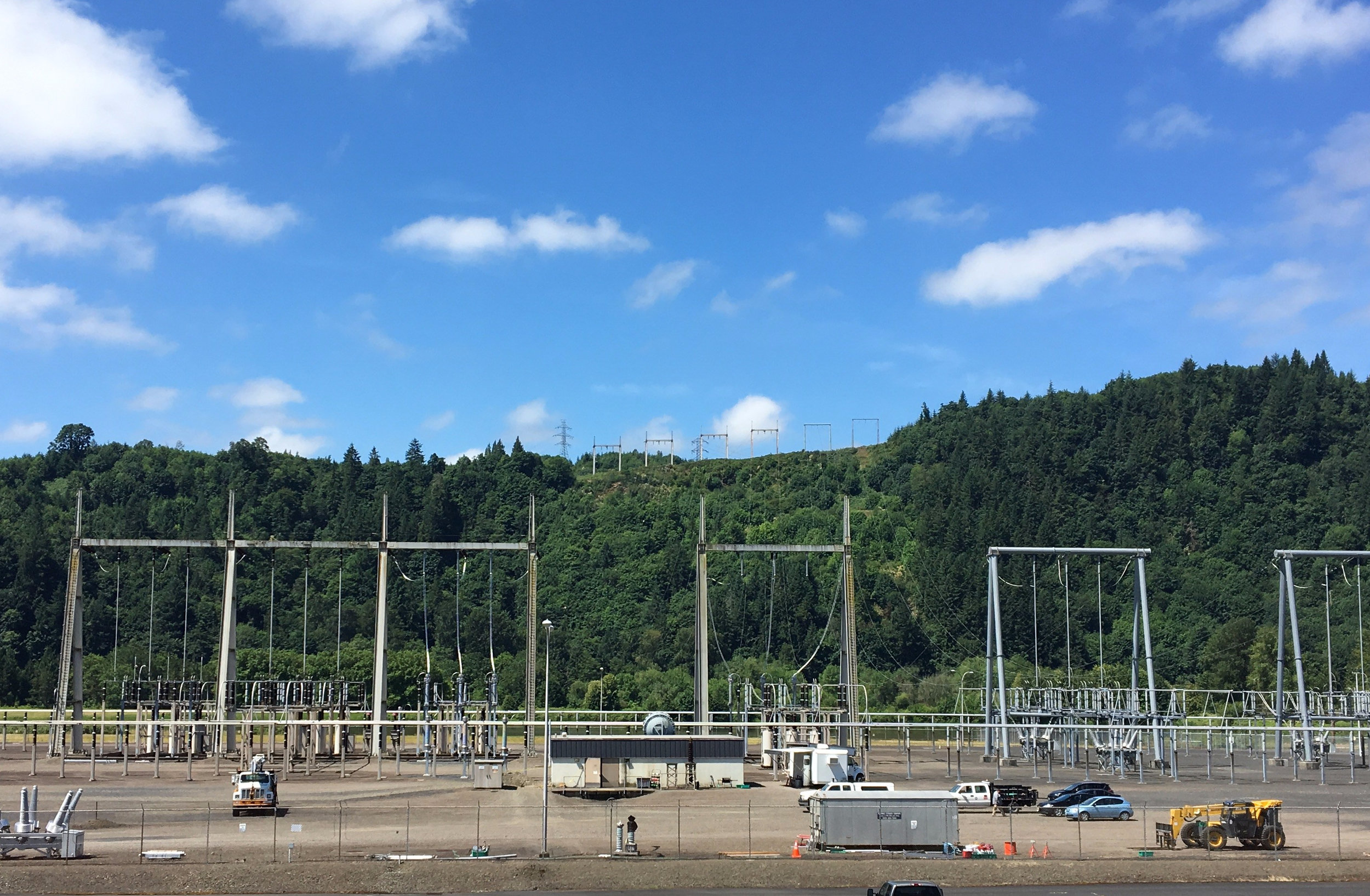Oregon Energy History: Trojan
Earlier this week, Oregon Department of Energy staff went on a tour of the former Trojan Nuclear Power Plant site, just south of Rainier and Prescott, Oregon. Located along the Columbia River, Trojan was Oregon’s only commercial nuclear power plant. Construction began in 1968, and the plant started sending power to the grid in 1976. The nearly 500-foot tall cooling tower was visible from I-5 and Highway 30.
Unfortunately, design flaws and other issues forced temporary closures and expensive repairs just a year into operation. Majority owner Portland General Electric discovered serious construction flaws, including susceptibility to earthquakes.
Following the 1979 accident at Pennsylvania's Three Mile Island nuclear power plant, Oregon voters passed a ballot initiative that prohibits licensing of any new nuclear power plant – unless it is approved by voters. In addition, several advocacy groups urged the closure of Trojan in the late 80s and early 90s, including ballot measures that were ultimately defeated.
Seventeen years into operation, PGE announced it would close the plant.
The Oregon Department of Energy oversaw PGE’s successful decommissioning of Trojan, which included deconstruction of most of the buildings onsite – as well as a pretty cool implosion of the cooling tower in 2006.
https://www.youtube.com/watch?v=LpabGJPCmGg
The site now contains just a few buildings and a large concrete pad, known as the Independent Spent Fuel Storage Installation (ISFSI). The ISFSI houses 34 dry casks – large concrete and steel canisters – which keep Trojan’s 791 spent nuclear fuel assemblies safe. On-site storage is meant to be temporary, until a national repository for nuclear waste has been identified.
While the dry cask storage is very safe, any spent nuclear fuel can still pose a potential safety or security hazard – so ODOE remains prepared for any potential emergencies. Our staff participate in emergency notification/communication exercises with PGE each year.





